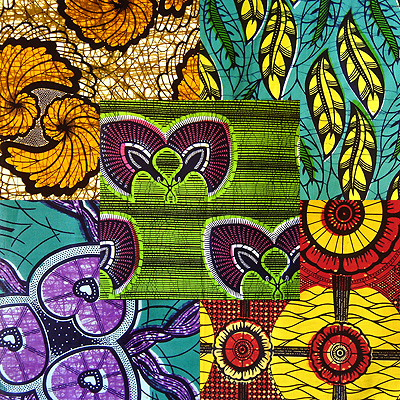by Wayne – African Fashion and Textiles
(first published October 31, 2008)
We all love African fabrics and clothing. The bright colors, distinctive designs, and hand-made quality give us something truly extraordinary that also has a rich cultural meaning. But is there more to know about African fabrics and why it is significant? Let’s find out!
In order of tradition and value, 1)weaves, 2) tie dyes, 3) batiks, and 4) industrial prints represent the four types of cloth Africans use to make clothing.
Woven Cloth
This is the oldest and most valuable type of fabric in Africa. It is also the most time-consuming to make. Weaving represents a tradition that is passed down from father to son and from uncle to nephew, and from mother to daughter and aunt to niece. The complexity of the weave, the color, and the type of thread used, determines the value of the fabric.
Mudcloth, Asoke, Kuba cloth, Kente cloth, and country cloth are all examples of woven cloth.
Mudcloth
Mudcloth is the traditional cloth from Mali. With rich blacks, browns, and whites, sections of cloth are composed of individual motif such as “fish bones”, “little stars”, or “hunters”. Each piece of mudcloth has its own unique story to tell.
Asoke cloth, a traditional cloth of the Yoruba, has three main designs: etu, a dark blue indigo dyed cloth, sanyan, a brown cloth woven from the beige silk of the Anaphe moth; and alaari, woven from Southern European silk obtained from the Saharah via Tripoli.
 Kente
Kente
Kente, probably the best known of the woven cloths, was worn by political authorities and high-ranking officials of the Ashanti people. A colourful fabric of golds, yellows, reds, blacks, greens, and blues, each intricately designed piece of fabric conveys messages about historical and cultural landmarks, philosophical concepts, political thoughts, or religious and moral values of society.
The above are all examples of woven cloths. An example of tie-dye is indigo cloth or tie-dyed cottons. Batiks are cotton fabrics with designs painted on them using a wax technique. And industrial prints are cloths manufactured in Europe. Batiks and wax prints are more commonly used today in the creation of African clothing. Africans use them not just for everyday wear, but also for creating clothes for special ceremonies and events.
COLORS IN AFRICAN CLOTHING
Colors in the fabrics of African people posses important meaning. Meanings vary from people to people and fabric to fabric. For example, the Akan people in West Africa use dark colors such as red, black, and brown for funerals, while the Akon use white for joyous occasions, such as naming ceremonies. In kente cloth made by the Ashanti people of Ghana, gold represents status and serenity. Yellow represents fertility (like the ripeness of an egg yoke or a fruit) and vitality. Green signifies the renewal and growth seen in plants and represents the cycle of birth and decay. Blue represents the presence of God and the omnipotence of the blue sky. Blue also refers to a pure spirit, one which rests in harmony. Red connotes passion, the passion of political determination, struggle, and defense. Ashanti also believe that red holds protective powers. Finally, black denotes seriousness and a union with ancestors. It implies spiritual awareness.
Source: africaimports.com










